#jan amos komensky
Text

„Без примери нищо не се научава“
353 години от смъртта на Ян Амос Коменски (1592 – 1670)
Изображение: https://www.biography.com/
1 note
·
View note
Text
SHIT. I. GOT. TOO. NERVOUS. AT. PEDAGOGY.
I FUCKING SAID “JAM ANUS KOMENSKY” INSTEAD OF “JAN AMOS KOMENSKY”
ASJLDDHSHZKSOSHSJDNDJ HELP
4 notes
·
View notes
Photo

“Belarusian was already significantly different from Russian and other Slavic languages when it was first mentioned. Historical documents in the Belarusian language first appeared after the Belarusians adopted Christianity. In 986, Icelandic missionary Thorvald Konradsson baptized the Belarusian lands. Even then, however, the Belarusians rejected the rules of the Old Church Slavonic language in favor of their own. Later, in the 13th-16th centuries, Belarus was part of the Grand Duchy of Lithuania, Europe's largest state since the 14th century. In addition to the Belarusian lands, the principality included the territories of the modern Baltic states, as well as parts of Ukraine, Russia, and Poland.”
“A key figure in the history of the Belarusian language is Francysk Skaryna, who played a huge role in the birth of the entire East Slavic book printing. His name is mentioned on par with such famous figures of the European Renaissance as Leonardo da Vinci, Raphael, and Jan Amos Komensky. Francysk Skaryna went down in history as the “father of Eastern European book publishing” for printing the first Bible in Old Belarusian in 1517. This is how Belarusian became the first East Slavic language in which book printing began. Francysk Skaryna’s legacy numbers 520 books, many of which are in Russia, Poland, the Czech Republic, and Germany.”
❖ A nation made speechless: A chronicle of the Belarusian language destruction, from the Bolsheviks to Lukashenko
2 notes
·
View notes
Text

•●🍯THE HONEYCOMB🍯●•
✝oday's honey🌱
September 17, 2022
*John Amos Comenius*
_(The Father of Modern-day education)_
_Knights of the Kingdom Series_
🛐📈📈📈📈📈📈📈📈🛐
John Amos Comenius, also known as Jan Amos Komensky was born on March 28, 1592 in Nivnice, Moravia (which is now in the Czech Republic).
John Comenius was a Moravian teacher, educator, bishop, and writer in the seventeenth century. Comenius authored over forty works, and he introduced pictorial textbooks, gradual learning of comprehensive concepts, equal opportunities for poor children and women, and practical, universal education.
Comenius revolutionized education in three ways: school systems, educational theories, and educational methods. First, Comenius outlined the school system prominently used in America today: kindergarten, elementary school, secondary school, college, and university. Secondly, he created a general theory of education around the idea of education according to nature whereby children learned at a natural pace from simple concepts to challenging theories. Thirdly, Comenius introduced creative teaching methods to help the assimilation of knowledge.
No man has influenced education as much as Comenius did.
_*Inspiring Quote*: Much can be learned in play that afterwards be of use when the circumstances demand it._
•°•°•°•°•°•°•°•°•°•°•°•°•°•°•°•°•°•°•°•°•°•°•°•°•°•°•°•°•°•°•°•°•°•°•°•°•°•°•°•°•°•°•°•°•°•°•°•°•°•°•°•°•°•°•°
THE HONEYCOMB©
Bless a life by sharing
https://web.facebook.com/honeycombdailydevotional/
https://t.me/thehoneycombdailydevotional
#christ lover#his princess#his power#youtube#quiet spiritte#quiet spirittt#christian bible#christianity#jesus christ#koinonia
0 notes
Text
Interesting Comments I have received - Part 3 Connections Between Comenius & My Take on the Reset Timeline
Interesting Comments I have received – Part 3 Connections Between Comenius & My Take on the Reset Timeline
In the third part of this four-part series, I am going to base my research on a publication regarding a historical person, for which one of my viewers provided me with a link to take a look at it and see what I thought.
The person was Jan Amos Komensky, also known as John Amos Comenius.
Have you ever heard of him?
I sure hadn’t!
Not being known to the general public is interesting to note,…
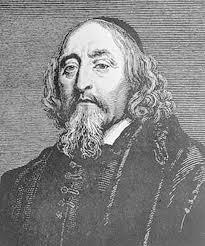
View On WordPress
0 notes
Photo
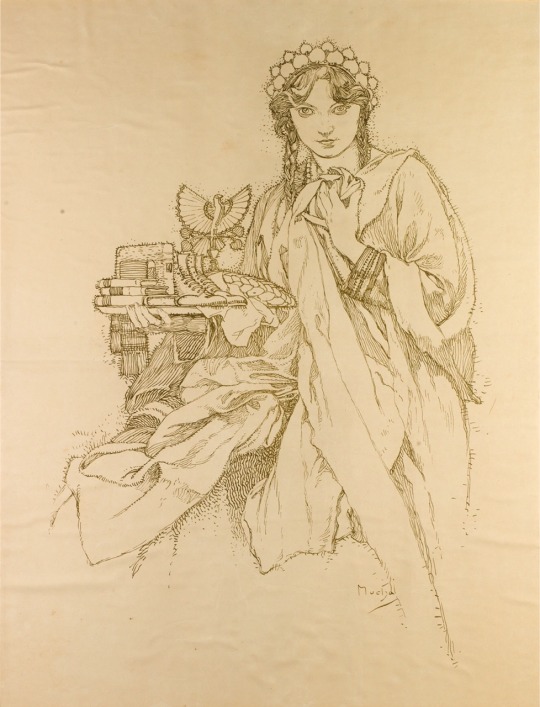
Komensky. Prague.1922. Extant copy of a lithograph. No text. 96 x 73 cm. (37.8 x 28.74 in.) Art by Alphonse Mucha.
#spolek komensky#komensky#alphonse mucha#alphonse maria mucha#alfons maria mucha#alfons mucha#jan amos komensky#comenius#progressive education#czech history#art nouveau#jugendstil#the komensky society#maiden#books
346 notes
·
View notes
Photo
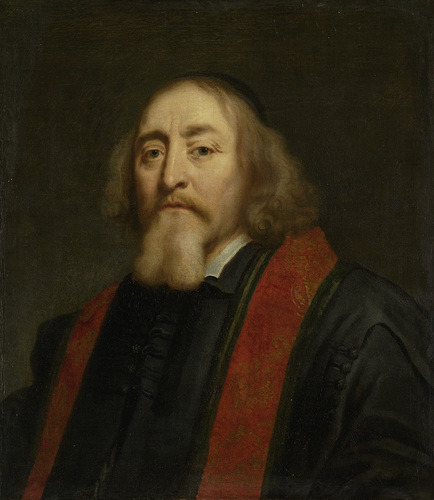
Portrait of Jan Amos Comenius, Museum of the Netherlands
Portret van Jan Amos Comenius (Komensky) (1592-1670). Tsjechisch humanist en pedagoog. Als voorganger van de Moravische of Boheemse Broedergemeente verdreven en sedert 1656 gevestigd te Amsterdam. Buste naar links.
http://hdl.handle.net/10934/RM0001.COLLECT.4913
9 notes
·
View notes
Photo
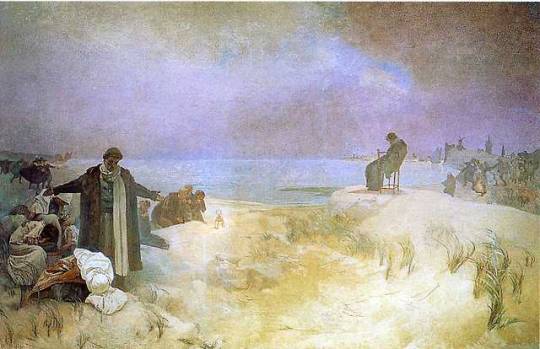
Jan Amos Komensky, 1918, Alphonse Mucha
Size: 405x620 cm
Medium: tempera on canvas
5 notes
·
View notes
Quote
L'Ordre des Rose-Croix.
Le méconnu initié Comenius et son successeur Saint-Yves d'Alveydre furent les discrets mais très influents représentants de l'Ordre des Rose-Croix. Et avant eux, l'allemand Andreae auteur du livre "Turris Babel" (Tour de Babel). Martin Luther aurait été, lui aussi, un initié rose-croix comme le fut Nicolas Roerich (de son vrai nom Serge Macronowsky), ce dernier ayant été un proche conseiller du président Roosevelt. Le symbole Rose-Croix (une rose unie à la croix) est précisément l'écusson que portait Luther. Selon Pierre Virion, il s'agit de l'emblème du christianisme gnostique.
Le rosicrucisme est un ésotérisme prétendument chrétien au service d'une réforme universelle du monde. Il regroupe gnose, Kabbale, manichéisme, alchimie, spiritisme...toutes sortes de fausses spiritualités dirigées contre le corps mystique du Christ. Membre de la Royal Society (fondée à Londres en 1660 pour le développement des sciences, la Royal Society est d'inspiration rosicrucienne), l'initié franc-maçon Comenius confirmait cette hostilité lorsqu'il préconisait la "destruction de l'Idole et de l'Idolâtrie et partout le rétablissement du culte le plus pur de la divinité". Et ce avant d'ajouter dans un phrasé typiquement maçonnique: "Le pape est le grand Antéchrist et la prostituée de Babylone". Protestant devenu ensuite franc-maçon, le tchèque Comenius (son vrai nom: Jan Amos Komensky) est officiellement considéré par l'UNESCO comme étant l'ancêtre spirituel de cette institution dans l'éducation, la science et la culture. Ce haut initié fut lui-même l'héritier spirituel de l'allemand Johann Andreae. Ce dernier fut l'un des tous premiers Rose-Croix. Protestant luthérien, Andreae prônait la divinité de l'homme par le biais de l'ésotérisme. Il fonda les Unions chrétiennes, un mouvement qui fut opposé aux Jésuites.
Johan Livernette, Le complot contre Dieu. Le mondialisme démasqué, Editions Saint-Rémi, 2014.
0 notes
Text
Comenius - Man as the image of God and the conception of education
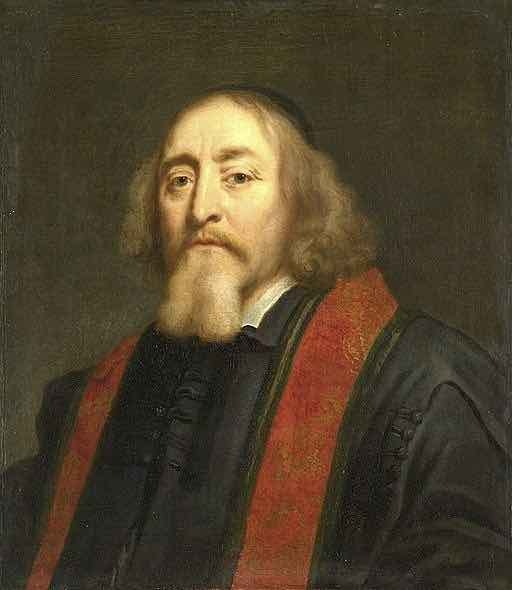
The labyrinth of a life
Comenius (Jan Amos Komensky), a committed Christian, a teacher in turmoil
Landscape of Moravia Czech Republic
Jan Amos Komensky (Comenius) was born on March 28, 1592 in Nivnice, near Uhersky Brod in South Moravia (now Czech Republic) into a family of the Church of the Unity of the Bohemian Brethren, the spiritual heiress of John Hus.
After university studies in Germany in Herborn ( 1611-1613) and Heidelberg (1613-1614), he taught at the Latin school in Prerov and then in Fulneck where he was appointed pastor of the German-speaking community.
Under religious persecution
At the beginning of the Thirty Years' War, the Czech Protestants are defeated by the the Austrian Emperor Habsburg at the Battle of White Mountain near Prague in 1620.
This is followed by a fierce Catholic Counter-Reformation: the political leaders are executed, the Protestant faith is banned, people are forced to convert to Catholicism or to emigrate.
Comenius loses his possessions, his books, his parish and, above all, his wife and two daughters are killed by the pestilence. He remarried two years later.
In 1623, in hiding, he wrote The Labyrinth of the World and the Paradise of the Heart, an allegory that explains his conception of the world.
Emigrant and traveller through Europe
In 1628, he left his country and never returned. He will live through Europe, a complicated life as an emigrant. He experienced the miseries and dangers caused by war and religious hatred.
Read the full article
#Comenius-JanAmosKomensky#Comenius'conceptionofeducation#ThegreatsDidactis((DidacticaOperaOmnia)#TheLabyrinthoftheWorldandtheParadiseoftheHeart#TheWorldinPictures(Orbispictus)
0 notes
Photo

LA NECESSITÀ DI FARE DIDATTICA
Cambiare scuola per un insegnante è sempre molto difficile (soprattutto se si cambia ordine), ma se si inizia a lavorare nella prospettiva di conoscere il nuovo ambiente é necessario (per certi versi strategico) partire dai ragazzi. Bisogna guardare anche a loro per comprendere la scuola con i suoi punti di forza e di debolezza, gli obiettivi realizzabili, le emergenze da arginare. Per avere, insomma, uno sguardo progettuale. In questo tempo di cambiamento ho osservato la nuova realtà, ho ascoltato tutti (studenti e docenti) insomma mi sono fatto un'idea della realtà che non reputo definitiva, ma che mi da spunti su cui riflettere e lavorare. Quello che emerge da quanto esprimono i ragazzi (questionario conoscitivo della realtà scolastica) è il bisogno di Didattica nel senso più alto del termine. Ovviamente nessuno si è espresso in questi termini. Leggendo tra le righe, in profondità, il loro punto di vista emerge forte questo necessità. A loro dire spesso ignorata da alcuni dei loro insegnanti. Loro, i giovani, protagonisti delle trasformazioni del contesto socio-culturale, fruitori (quasi esclusivi in Italia) dei media digitali. Loro che, rispetto alla generazione di noi adulti, hanno nuovi stili e ritmi di apprendimento differenti. Sono proprio loro a chiedere a noi adulti di riprendere in mano la didattica e farla brillare! Questi ragazzi, descritti spesso come “irrecuperabili” danno a molti insegnanti la possibilità di riprendere consapevolezza dell'alto valore di fare didattica insieme loro.
Didactica docendi artificium sonat. Riscopriamo la bellezza di fare didattica. Riappropriamoci della straordinaria “arte di insegnare”. Prendiamoci l'impegno con i ragazzi di fare una “grande Didattica”. Impegniamo le nostre energie fisiche ed intellettuali “nell’arte universale di insegnare tutto a tutti e di insegnare con tale sicurezza che sia pressoché inevitabile conseguire buoni risultati“. Aiutiamo questi ragazzi ad aver cura di splendere, ma prima iniziamo noi! Prof. RH Plus
Fonti e ispirazioni:
• Pier Cesare Rivoltella, L'agire didattico
• Jan Amos Komensky, Didactica Magna 1640
0 notes
Photo

https://www.cr2030.cz/aktuality/jan-amos-komensky-prace-informacemi-znamena-moc/
Oprásek s Komneckím f otkasu.
6 notes
·
View notes
Photo

╔══- 🐝 THE HONEYCOMB🐝 ══╗ Today's Knight💂 May 11, 2019 John Amos Comenius (The Father of Modern-day education) Knights of the Kingdom Series ✝❄❄❄❄❄❄❄❄❄✝ John Amos Comenius, also known as Jan Amos Komensky was born on March 28, 1592 in Nivnice, Moravia (which is now in the Czech Republic). John Comenius was a Moravian teacher, educator, bishop, and writer in the seventeenth century. Comenius authored over forty works, and he introduced pictorial textbooks, gradual learning of comprehensive concepts, equal opportunities for poor children and women, and practical, universal education. Comenius revolutionized education in three ways: school systems, educational theories, and educational methods. First, Comenius outlined the school system prominently used in America today: kindergarten, elementary school, secondary school, college, and university. Secondly, he created a general theory of education around the idea of education according to nature whereby children learned at a natural pace from simple concepts to challenging theories. Thirdly, Comenius introduced creative teaching methods to help the assimilation of knowledge. No man has influenced education as much as Comenius did. Inspiring Quote: Much can be learned in play that afterwards be of use when the circumstances demand it •°•°•°•°•°•°•°•°•°•°•°•°•°•°•°•°•°•°•°•°•°•°•°•°•°•°•°•°•°•°•°•°•°•°•°•°•°°•°•°•°•°•°•°•°•°•°•°•°•°•°•°•°•°•°•°•°•°•°• THE HONEYCOMB© Bless a life by sharing https://web.facebook.com/honeycombdailydevotional/
0 notes
Text
O Que É Pedagogia ?
O Que É Pedagogia ?
Pedagogia é uma ciência ou disciplina do ensino que começou a se desenvolver no século XIX. Popularmente a Pedagogia é vista como o modo de ensinar. Tem pedagogia quem ensina bem. Uma pessoa estuda ou se serve da pedagogia para ensinar melhor a matéria, a utilizar técnicas de ensino; desse modo, o pedagógico seria o metodológico.1) Definições De Pedagogia :

Há muitas
definições para o termo Pedagogia. Vejamos algumas delas:A Pedagogia é a ciência ou disciplina cujo objetivo é a reflexão, ordenação, a sistematização e a critica do processo educativo. (Wikipédia)A Pedagogia é a função ou trabalho do professor; ensino; a arte ou ciência de ensinar; métodos de instrução, (wiktionary)A Pedagogia é a conduçã
o do saber; p
reocupa-se com o ato de ensinar e de aprender, (cefetpa)A Pedagogia é a teoria que investiga a teoria e a prática da educação nos seus vínculos com a prática social global. (Libâneo, 1994)Pedagogo – Especialista em pedagogia; Aquele que ensina crianças (wiktionary)O termo “pedagogia” é visto, de forma estrita, como norma em relação à educação. Toda e qualquer corrente pedagógica é norteada pela seguinte questão: “Que é que devemos fazer, e que instrumentos didáticos devemos usar, para a nossa educação?”2) O objetivo Da PedagogiaA pedagogia tem como objetivo principal a melhoria no processo de aprendizagem dos indivíduos, através da reflexão, sistematização e produção de conhecimentos. Como ciência social, a pedagogia esta conectada com

os aspect
os da sociedade e também com as normas educacionais do país.3) Temas A bordados Pela PedagogiaA pedagogia estuda diversos temas relacionados à educação, tanto no aspecto teórico quanto no prático.1- Aprendizado de conhecimentos2- Métodos e sistemas pedagógicos3- Dificuldades de aprendizado4- Didáticas e práticas pedagógicas5- Conteúdos educacionais6- O aluno no processo educativo7- O papel do professor no processo educacional4) O PedagogoO pedagogo é o profissional formado para atuar na área pedagógica. Porém, todos aqueles que atuam no processo educativo
(professores, pais, monitores, orientadores, psicólogos etc.) também devem conhecer os princípios básicos de pedagogia.5) Pedagogia e educaçãoO termo “educação”, visto como “ato educativo”, é prática social que identificamos como uma situação temporal e espacial determinada na qual ocorre a relação ensino – aprendizagem, formal ou informal.6) Pedagogia E DidáticaPedagogia e
didática estão intimamente relacionadas, entretanto, são coisas distintas. A didática depende da pedagogia e é considerada como parte desta, que se ocupa dos métodos e técnicas de ensino.O termo “didática” está relacionado a um saber especial:Muitos dizem que é um saber técnico, porque vem de uma área onde se acumulam os saberes que nos dizem como devemos usar da chamada “razão instrumental” para melhor contribuirmos com a relação ensino-aprendizagem. A razão técnica ou instrumental é aquela que faz a melhor adequação entre os meios e os fins escolhidos. A didática é uma expressão
pedagógica da razão instrumental. Sua utilidade é imensa, pois sem ela nossos meios escolhidos poderiam, simplesmente, não serem os melhores disponíveis para o que se ensina e se aprende e, então, estaríamos fazendo da educação não a melhor educação possível.A didática é a parte da pedagogia que se
ocupa dos métodos e técnicas de ensino destinados a colocar em prática as diretrizes da teoria pedagógica.A didática estuda os processos de ensino e aprendizagem. O educador Jan Amos Komensky, mais conhecido por Comenius, é reconhecido como o pai da didática moderna, e um dos maiores educadores do século XVII. (Enciclopédia Wikipédia)A Enciclopédia Wikipédia apresenta os seguintes elementos da ação didática:1- O professor2- O aluno3- A disciplina (matéria ou conteúdo)4- O contexto da aprendizagem5- As estratégias metodológicas
youtube
0 notes
Text
Tarot Mucha: The Art Behind the Cards
Weirdly enough, it was the Tarot Mucha that led me to Mucha himself, and not the other way around. I wanted my first deck to stick to Rider-Waite-Smith symbolism, but in a style that pulled at my historian heart-strings. I found and bought this deck, and before I knew it, I had Mucha posters on my wall and even wrote my third year final paper on his influence on Belle Epoque advertising. So of course I was absolutely overjoyed to discover how well his works were used in these cards! Below you will find a list of which paintings inspired which cards, completed to the best of my abilities. There may be mistakes and there definitely are absences. I basically just went through his works one at a time, looking for familiar figures, so hopefully you can forgive me. PLEASE feel free to let me know if you know something I don’t and can fill in some of the blanks! In the meantime, I hope this is something to help you appreciate both Mucha and the deck’s really fantastic designers even more.
MAJOR ARCANA
The Fool- Autumn from The Four Seasons (1895)
The Magician- Poster for Gismonda (1894)
The High Priestess- Reverie (1898)
The Empress- Biscuits Lefevre-Utile (1896)
The Emperor AND The Hierophant- The stained glass at St. Vitus Cathedral (central panel with Cyril and Methodius; 1931). I might be wrong here, but the face seems to go to the Emperor, and the robes/worshippers to the Hierophant
The Lovers- Spring Night (1910; the lovers themselves) and Poster for the 8th Sokol Festival (1925; the angel in the background)
The Chariot- Creative Force (1911)
Strength- The Slav Epic, cycle no.18 (1926)
The Hermit- Winter Tale (1917)
The Wheel- Summer from The Four Seasons (1896)
Justice- Poster for Moet + Chandon: Dry Imperial (1899)
The Hanged Man- Still looking
Death- The Death of Frederick Barbarossa (1898)
Temperance- Poster for La Samaritaine (1897)
The Devil- Salammbo (1896)
The Tower- It seems to resemble the tower in his photo of the Dome of the Chilandar Monastery, Mount Athos (1924) but this might be a stretch on my part?
The Star- The Pole Star (1902)
The Moon- The Moon (1902)
The Sun- Anderson’s Snow Queen (year?)
Judgement- Le Pater (1899)
The World- The Morning Star (1902)
WANDS
Ace- None of the Aces in this deck are directly from his works as far as I can tell (though I’d love to hear otherwise!)
2- Still looking
3- The Slav Epic, cycle no.5 (1924)
4- Spirit of Spring (1894)
5- Still looking
6- Slav Epic, cycle no.6 (1926)
7- Poster for the 8th Sokol Festival (1925)
8- Joan of Arc (1909)
9- Poster for the Austrian Pavilion at Paris Exhibition (1900)
10- Madonna of the Lilies (1905)
Page- Poster for Lorenzaccio (1896)
Knight- Still looking
Queen- Anderson’s Snow Queen (year?)
King- The Slav Epic, cycle no.5 (1924)
CUPS
Ace- None?
2- Still looking
3- Amants (1895)
4- Prophetess (1896)
5- Winter from The Four Seasons (1900)
6- Still looking
7- The Slav Epic, cycle no.2 (1912)
8- Age of Wisdom (1936-8)
9- Poster for Bieres de la Meuse (1897)
10- The Slav Epic, cycle no.20 (1926)
Page- The Slav Epic, cycle no.3 (1912)
Knight- The Slav Epic, cycle no.2 (1912)
Queen- Photographic study for a banknote (1919)?
King- The Slav Epic, cycle no.1 (1912)
SWORDS
Ace- None?
2- Still looking
3- Fate (1920)
4- Slav Epic, cycle no.10 (1924)
5- Still looking
6- Slav Epic, cycle no.2 (1912)
7- Still looking
8- Iris from The Flowers (1898)
9- Poster for Lottery of the Union of South West Moravia (1912)
10- Still looking
Page- Poster for Hamlet (1899)
Knight- Still looking
Queen- Slavia (1896)
King- Still looking (Swords were giving me a tough time, haha)
PENTACLES
Ace- None?
2- Still looking
3- Slav Epic, cycle no.4 (1923)
4- Independence (1910/1)
5- Woman in the Wilderness (1923)
6- Jan Amos Komensky (1918)
7- The Slav Epic, cycle no.15 (1914)
8- Still looking
9- Autumn from The Four Seasons (1896)
10- Still looking
Page- Still looking
Knight- Luchon (1895)
Queen- Still looking
King- Slav Epic, cycle no.6 (1926; I might be wrong but he seems to be an amalgam of the figures at the bottom left)
Card backs- Fruit (1897)
I hope you enjoy exploring Mucha as much as I did :) If you fill in any of the blanks I’ll update the list and credit you for your help!
31 notes
·
View notes
